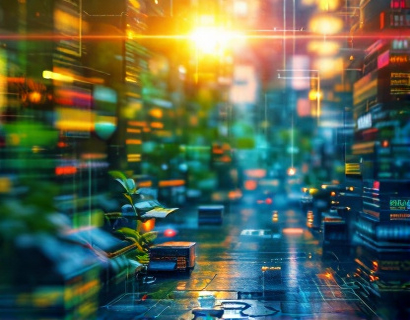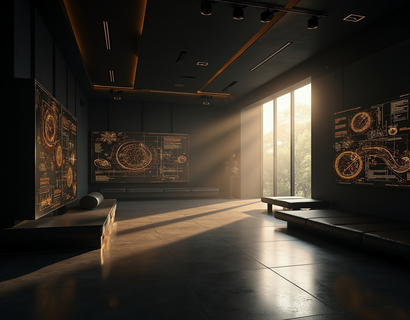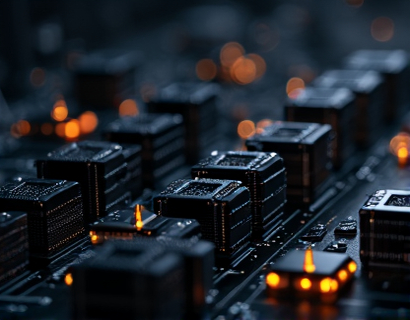Maximize Your Indoor Garden: Expert Tech for Optimal Plant Growth and Sustainability in Solariums
Indoor gardening has evolved significantly with the integration of advanced technology, transforming ordinary spaces into thriving ecosystems. For those with a solarium or a dedicated indoor garden, leveraging expert technology can maximize plant growth and sustainability. This article delves into the cutting-edge solutions that can elevate your indoor gardening experience, ensuring your plants not only survive but thrive in a customizable, future-forward environment.
Understanding the Basics of Indoor Gardening Technology
To begin, it's essential to understand the core components of a high-tech indoor garden. These systems typically integrate advanced lighting, climate control, and automation technologies. Each element plays a crucial role in creating an optimal environment for plant growth.
Lighting: Plants require specific wavelengths of light for photosynthesis. Traditional fluorescent and incandescent bulbs are being replaced by LED grow lights, which offer energy efficiency and the ability to tailor light spectra to the needs of different plants. LED lights can be adjusted to provide the right balance of blue and red light, promoting healthy growth and flowering.
Climate Control: Maintaining the right temperature, humidity, and air circulation is vital for plant health. Advanced systems use sensors and automated controls to monitor and adjust these conditions in real-time. This ensures that plants receive the ideal environment regardless of external weather conditions.
Automation: Automation technologies, including smart irrigation and nutrient delivery systems, allow for precise control over watering and feeding schedules. This not only saves time but also prevents overwatering and nutrient imbalances, which are common issues in manual gardening.
Optimizing Light for Plant Growth
The quality and quantity of light are critical factors in indoor gardening. LED grow lights have become the preferred choice due to their efficiency and versatility. These lights can be customized to emit specific wavelengths that are most beneficial for different stages of plant growth.
For seedlings, a higher proportion of blue light (around 450nm) is beneficial as it promotes leafy growth. As plants transition to the vegetative stage, a balance of blue and red light (around 660nm) is ideal for robust stem and leaf development. During the flowering stage, increasing the ratio of red light helps stimulate blooming and fruiting.
Additionally, light intensity and duration should be adjusted based on the plant species. Most indoor plants require 12 to 16 hours of light per day, but this can vary. Using timers and smart controllers, you can automate the lighting schedule to match the natural day-night cycle or customize it to the specific needs of your plants.
Creating the Perfect Climate
Maintaining the right climate inside a solarium is essential for plant health. Temperature, humidity, and air circulation must be carefully managed to prevent stress and disease.
Temperature Control: Most indoor plants thrive in temperatures between 65°F and 80°F (18°C to 27°C). Advanced climate control systems use thermostats and heaters/coolers to maintain a consistent temperature. Some systems even incorporate phase-change materials that absorb and release heat, helping to stabilize temperature fluctuations.
Humidity Management: Humidity levels should be kept between 40% and 70% depending on the plant type. High humidity can lead to fungal diseases, while low humidity can cause leaf burn. Humidifiers and dehumidifiers can be integrated into the system to maintain optimal moisture levels. Some advanced setups use misting systems or foggers to increase humidity around plants.
Air Circulation: Proper air circulation prevents the buildup of stagnant air, which can lead to mold and mildew. Fans and air circulators help distribute air evenly throughout the space, ensuring that all plants receive fresh air. Automated systems can adjust fan speeds based on temperature and humidity readings.
Automation for Efficient Gardening
Automation is a game-changer in indoor gardening, offering convenience and precision. Smart irrigation systems use soil moisture sensors to determine when plants need water, preventing overwatering and underwatering. These systems can be connected to a central controller that manages multiple aspects of the garden, from lighting to climate control.
Nutrient delivery systems can also be automated, ensuring that plants receive the right amount of nutrients at the right times. These systems can be programmed to release nutrients based on the plant's growth stage and specific needs, promoting healthy development.
Integrating all these components into a single, user-friendly platform can greatly simplify the gardening process. Many modern systems offer mobile apps that allow gardeners to monitor and adjust settings remotely, providing real-time data and alerts.
Customizing Your Indoor Garden
Every indoor garden is unique, with different plant species and environmental requirements. Expert technology allows for highly customizable setups that cater to these individual needs.
Plant-Specific Settings: Advanced systems can be programmed to create customized environments for different plant types. For example, a setup for orchids might focus on high humidity and specific light spectra, while a setup for succulents would prioritize well-draining soil and lower humidity.
Scalability: As your indoor garden grows, your technology setup should scale with it. Modular systems allow you to add more lights, fans, or sensors as needed, ensuring that your garden can expand without requiring a complete overhaul.
Sustainability Features: Sustainability is a key consideration in modern indoor gardening. Energy-efficient LED lights, water-saving irrigation systems, and smart controls that optimize resource use contribute to a more sustainable garden. Some systems even incorporate renewable energy sources, such as solar panels, to power the garden.
Case Studies and Real-World Applications
To illustrate the benefits of advanced indoor gardening technology, let's look at a few real-world examples.
Example 1: Urban Orchid Collector
An urban dweller with a passion for orchids set up a solarium in their home. They installed a comprehensive system featuring LED grow lights tailored to the blue and red spectra, a climate control unit with precise temperature and humidity management, and an automated irrigation system. The result was a vibrant collection of orchids that thrived year-round, despite the city's fluctuating weather conditions.
Example 2: Commercial Herb Farm
A small business decided to start an indoor herb farm using advanced technology. They utilized a modular lighting system that could be adjusted for different herbs, a smart irrigation system that monitored soil moisture, and an automated nutrient delivery system. The farm achieved high yields with minimal resource use, making it a sustainable and profitable venture.
Future Trends in Indoor Gardening Technology
The field of indoor gardening technology is rapidly evolving, with several promising trends on the horizon.
Artificial Intelligence and Machine Learning: AI can analyze data from sensors to optimize growing conditions in real-time. Machine learning algorithms can predict plant needs and adjust the environment accordingly, further enhancing growth and sustainability.
Biotechnology Integration: Advances in biotechnology, such as gene editing and plant biostimulants, can be combined with smart gardening systems to create plants that are more resilient and productive.
Internet of Things (IoT): The IoT will continue to play a significant role, connecting various devices and systems to create a seamless, interconnected gardening experience. This will allow for even greater automation and remote management.
Conclusion
By embracing advanced technology, indoor gardeners can transform their spaces into high-tech oases that maximize plant growth and sustainability. From optimized lighting and climate control to automation and customization, the tools available today offer unprecedented control and efficiency. As technology continues to advance, the future of indoor gardening looks brighter than ever, promising even more innovative solutions for plant enthusiasts and professionals alike.










































